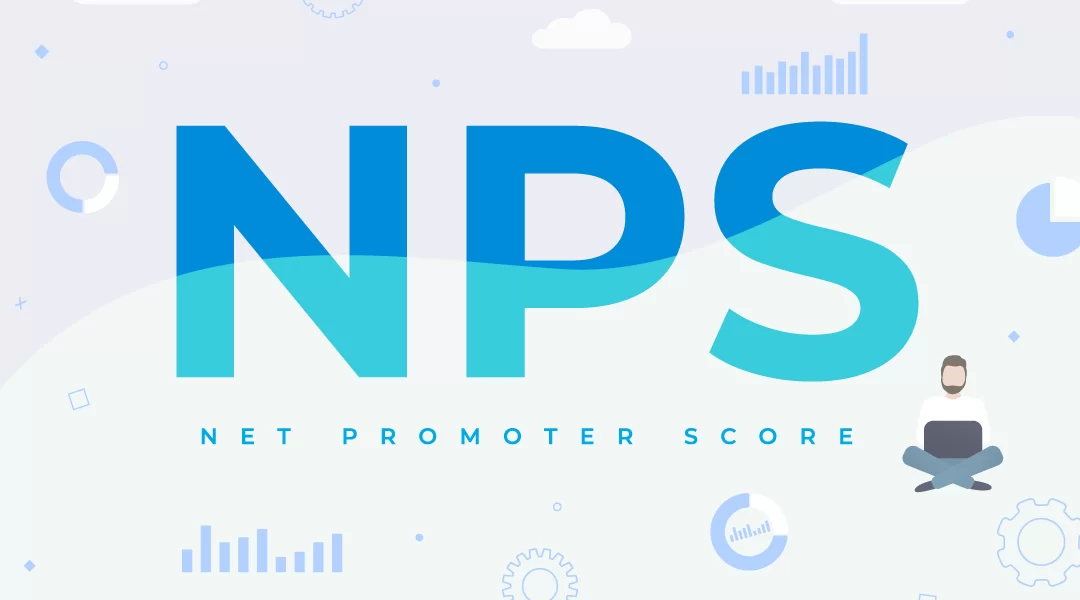Net Promoter Score (NPS) is a metric that can deliver immediate and tangible insights to gauge your organization’s relationship with your clients. Companies that implement this can metric use the resulting data to direct organizational changes such as customer service best practices, customer retention, and even product improvements and enhancement.
So, What is NPS?
Net Promoter Score is a customer loyalty metric that measures how likely a customer is to recommend a product or service to a friend. NPS is a simple metric to get. All you have to do is ask customers: “On a scale of 0 to 10, how likely are you to recommend Company X to a friend or colleague?”
- Respondents answering 9 or 10 are promoters.
- Respondents answering 7 or 8 are called “passives”
- Respondents giving a score from 0 to 6 are detractors.
To calculate your NPS, first, remove the passive “fence sitters.” Then subtract the percentage of detractors from the percentage of promoters.
For example, let’s say you send the NPS survey to 50 people. Of those 50 people, 6 of them are detractors, 14 are passive, and 30 are promotors. Here are the steps to calculating your NPS:
- Remove the passives from your total respondents. In this case, removing the 14 passives leaves us with 36 responses.
- Calculate the percentage of promotors and detractors. For this example, 17% are detractors (6/36) and 83% are promotors (30/36).
- Subtract the percentage of detractors from the number of promoters. In this case, 83 minus 17 equals a net promotor score of 66.
At Sharp Wilkinson, we use NPS to measure customer experience for our clients. While it may be tempting to load up a survey with a multitude of questions, one reason NPS is so successful is because it is only one question. This one question makes responding easy and eliminates friction. However, we take this engagement a step further by closing the feedback loop.

Close the loop and get valuable insights with a follow-up phone call.
Closing the Feedback Loop
NPS is easy to implement and great for qualitative analysis. Tools such as SurveyMonkey or Qualtrics can be used to automate your surveys. As mentioned above, NPS works well because it is one question, but it can also be a bit sterile. Companies get the most out of NPS by following up with respondents—be they detractors, passives, or promoters—and delving more deeply into the relationship by asking more detailed questions that provide insights and context such as:
“What is the reason for your score?”
“What is the one thing you would change about Company X?”
“What is the one thing you would not change about Company X?”
When to Send Your NPS Surveys
Choosing the right time to send your surveys can get you the best possible results. If you are running your first survey, you’ll want to send that survey out to all of your clients. When you run this initial survey, we recommend reaching out to customers that you have worked with in the last two years, regardless of whether they are currently working with your company or not.
Once that happens, you should consider an ongoing strategy to help you maintain a consistent approach.
Here are two main approaches to consider:
1. Time based – Surveys are sent dependent on how long a customer has been with your company. For example, a company may send the first NPS after a company has been a customer for 30 days.
2. Trigger based – Surveys are sent when a customer does something such as reaching out to customer support or renewing a contract.
Acting on the Results
Now what? What is the use of a survey like NPS if you aren’t turning the results into powerful action?
Fred Reichheld, a partner at Bain & Company, the creator of NPS, suggests a five-point customer feedback checklist to make the most of NPS:
- Have you reached a consensus on your business’ five most critical “moments of truth” with customers
- Do employees and managers get customer feedback routinely, on a daily or weekly basis?
- Do you let customers know the impact their feedback had on improving your processes?
- Do you know what percentage of detractors your operations can convert into promoters through service recovery processes?
- Can you put a dollar value on turning a detractor into a promoter?
Regardless of whether or not you follow this checklist, the key is to take action.
While customers may be with you for a short period of time or years, you will want to understand their experience today so you can implement positive changes for the future. Having an approach to survey customers at different stages of their lifecycle, you can identify customer sentiment, uncover blind spots, and make more customer-centric decisions.
![20250616_SPW_SEOSmallBizGuideCTA • Sharp Wilkinson Boost Your Online Visibility! Unlock the secrets to a top-ranking website with our FREE SEO Guide for Small Businesses. [Download Your Guide Now!]](https://sharpwilkinson.com/wp-content/uploads/2025/06/20250616_SPW_SEOSmallBizGuideCTA-1024x512.png)





